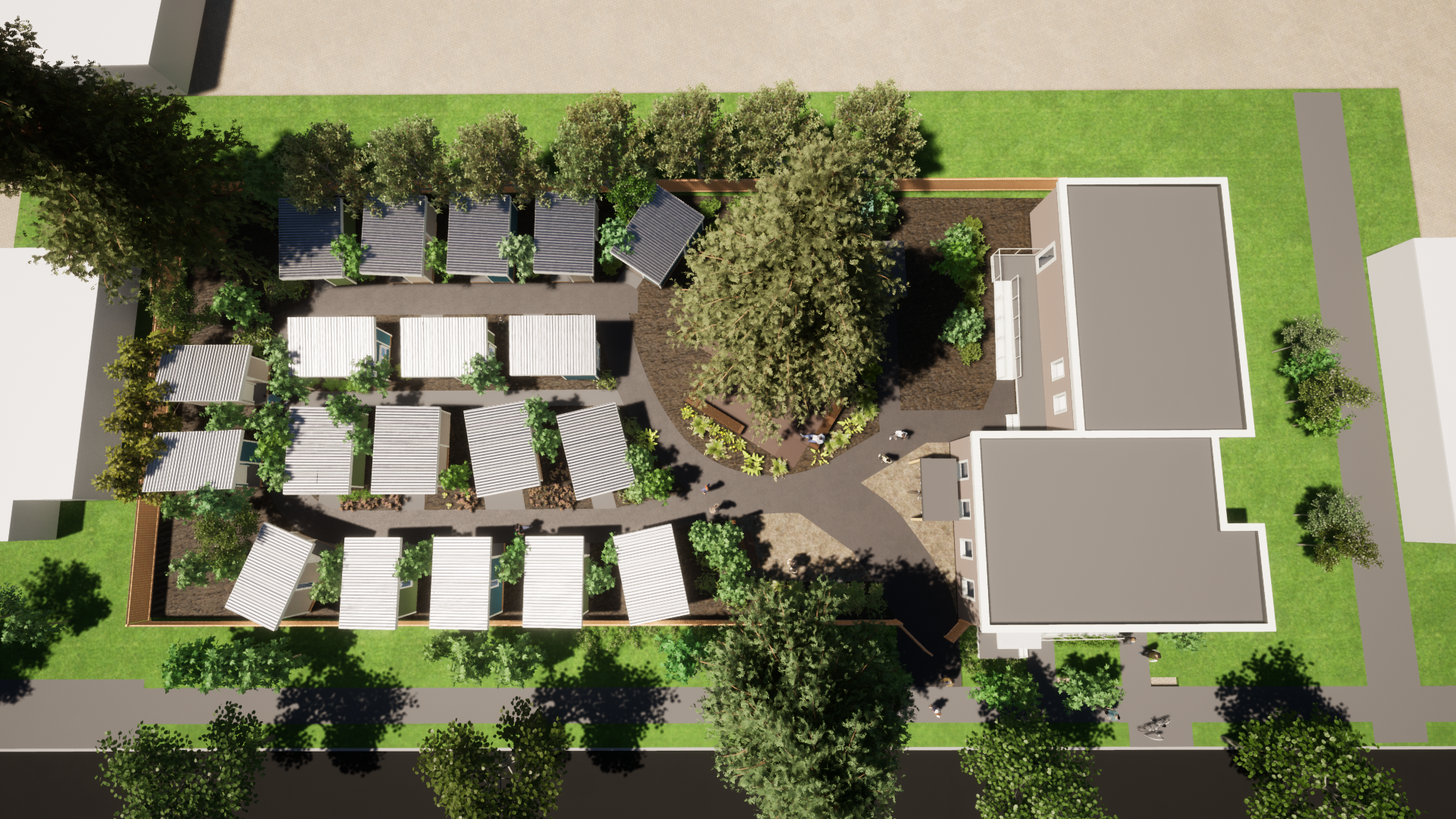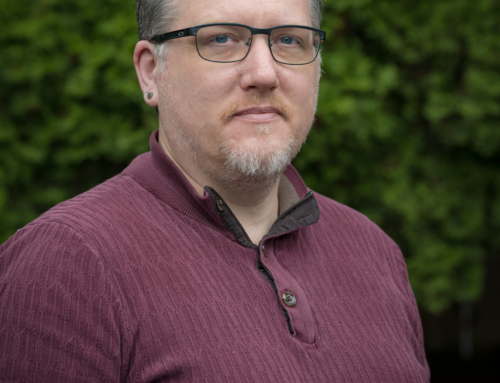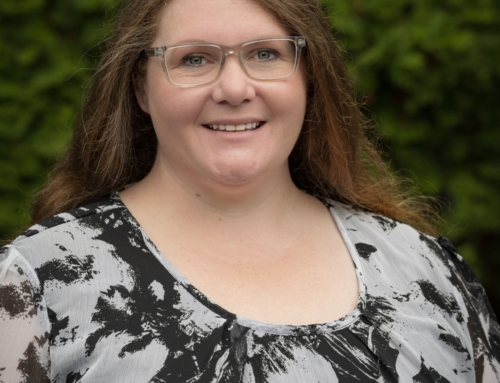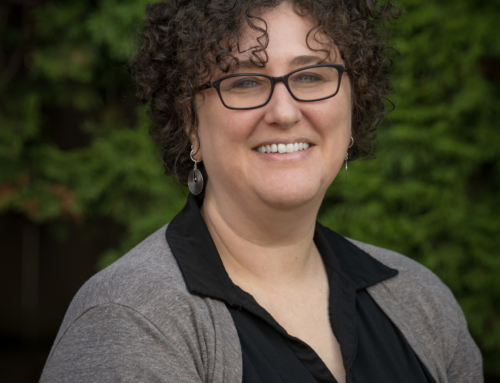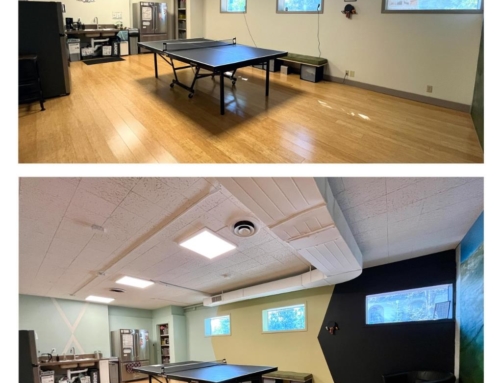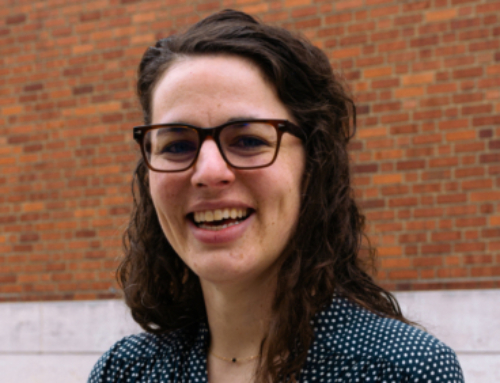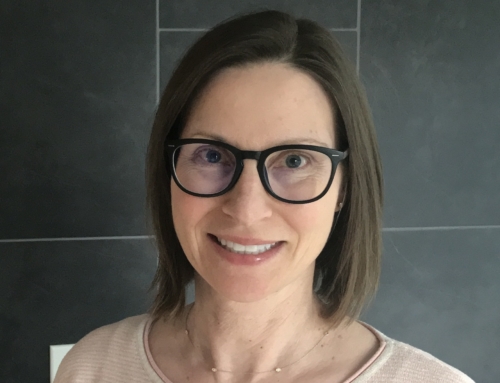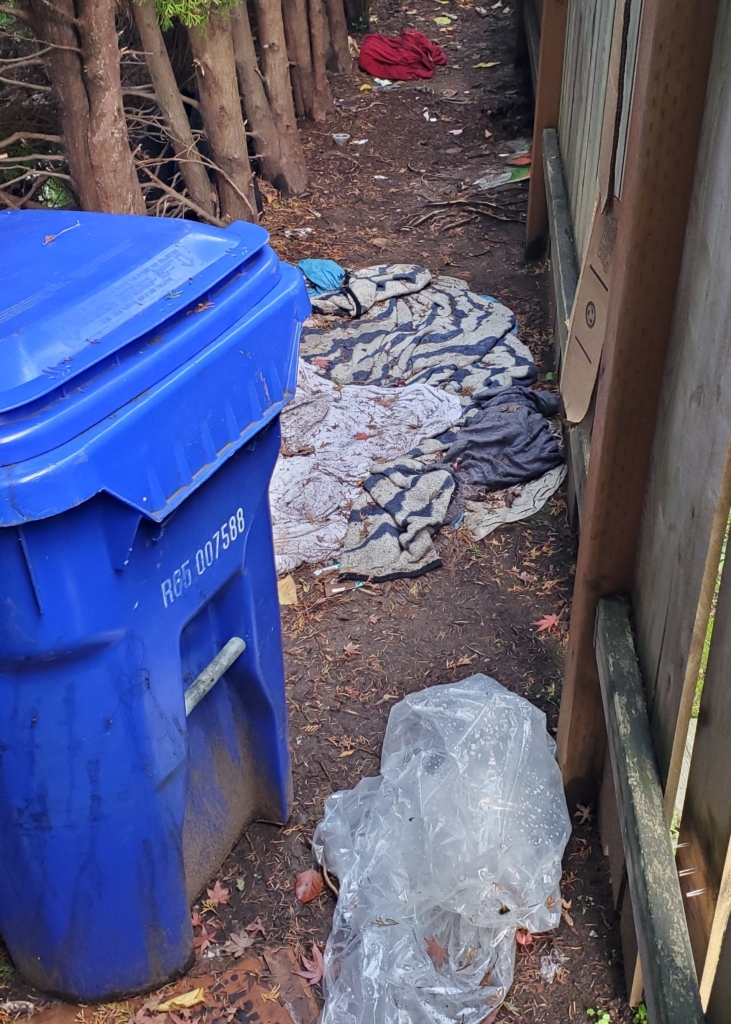
Written by Joseph Purkey
Houselessness is a Problem for Everyone
Many communities are being confronted with rising houselessness* these days and transitional housing** is a key piece of the solution. Once someone gets to the point where they are living on the street it becomes a monumental task to get back into housing. Once you are living in your car or a tent, showers and healthy, refrigerated foods are a luxury. If you don’t have easy access to food and a shower it is harder to hold down a job. That’s not to mention the fact that if you don’t have a safe place to store your possessions they might not even be there when you get back if you go to get food or work a shift. This is all to say, houselessness is not going away on its own. Transitional housing, like the St Johns Village, meets the needs of having a safe, secure, and supported place to live while people get reintegrated into society.
* “Houseless” is the preferred term instead of “homeless” because a person can choose to make a home anywhere, but when we use these terms we are typically talking about people without a structure (house) to live in that is officially deemed habitable.
** There are three main types of supportive housing to address houselessness: 1) Temporary Shelter, where the main goals are to provide safety, security, and support; 2) Transitional Housing, where the focus is on support services back into standard housing, financial sustainability, and community living, coordinated through a case manager; and 3) Permanent Supportive Housing, where the focus is on independent living and less intense support from case managers.
The SJV and Convergence Origin Story
We were happy to see the success of the Kenton Womens’ Village in the nearby Kenton neighborhood, as well as the Clackamas County Veterans’ Village, so when we heard about the Joint Office of Homeless Services (JOHS) working with Do Good Multnomah and looking to build a similar village in our neighborhood of St Johns we got engaged right away. Back in 2018, we joined the St Johns Village Coalition, which was led by JOHS and included people who were currently houseless, where we explored what was needed here and worked together to introduce the idea to the neighborhood. We helped organize and hosted a table at the St Johns Village Fair early in 2019 to start getting neighbors informed about the issues and proposed solutions.
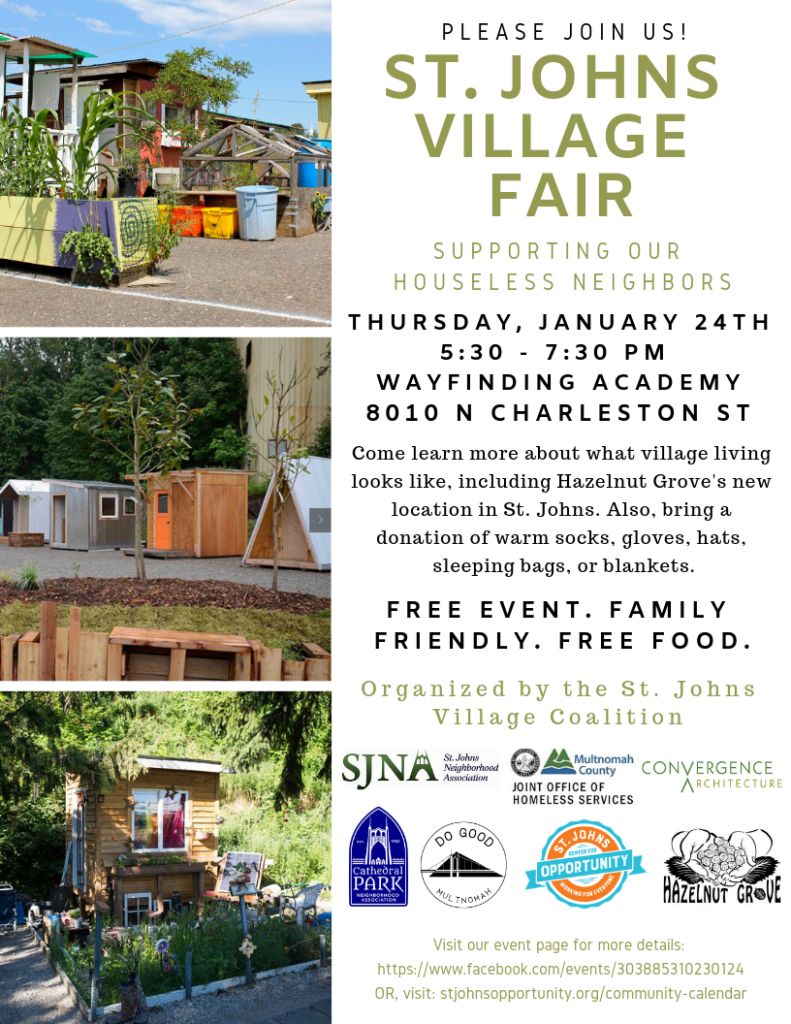
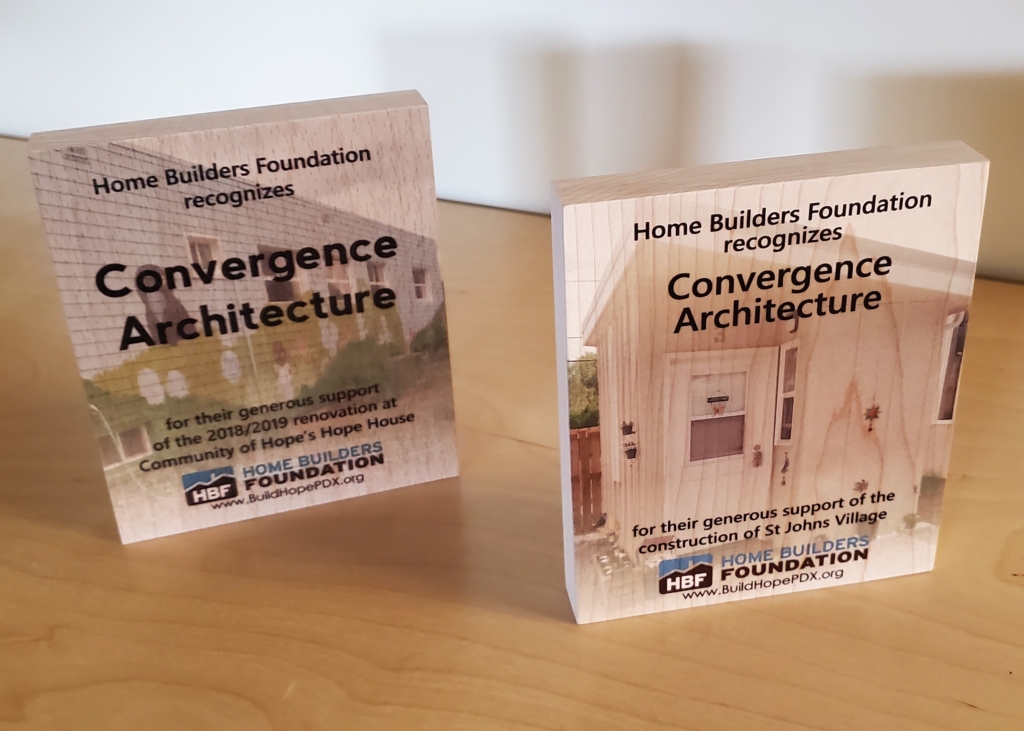
When a site lease was finally secured for the Village, we again reached out to JOHS to offer pro bono design services for the effort. The Homebuilders Foundation was already on the project, so we got to work with their team for the second time on a pro bono project (our first was for Hope House). We also pulled together a team of pro bono subconsultants, with Rachel Hill Landscape Architect and WCL Engineering, both in St Johns, and PAE Engineers. The site is just two blocks from our office and our St Johns team was excited to be a part of making this housing a reality.
People First Design
Our design process was informed by the input and experiences of several neighbors who were houseless, like the need for privacy and independence, which we accommodated with staggered sleeping pod doors and space for growing. We also used lessons learned from the two other transitional housing villages in Oregon at the time, and, of course, our own design experience working with clients with all different types of needs and perspectives. There is so much of being houseless that puts people outside of society’s rules and expectations that it becomes dehumanizing. One of the roles of transitional housing is to provide dignity and a source of pride to the residents moving off the streets as one aspect of reclaiming their sense of self-worth.
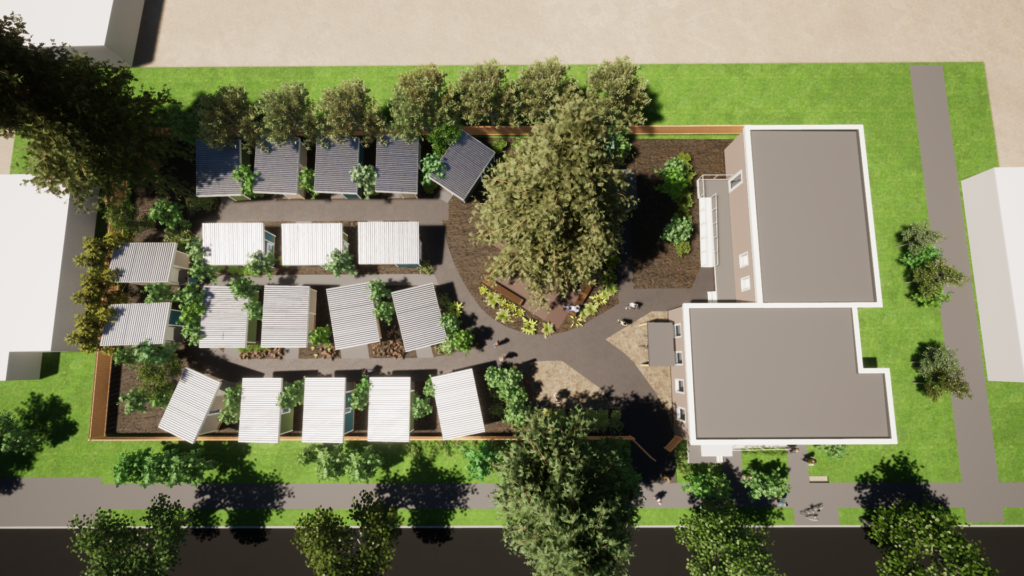
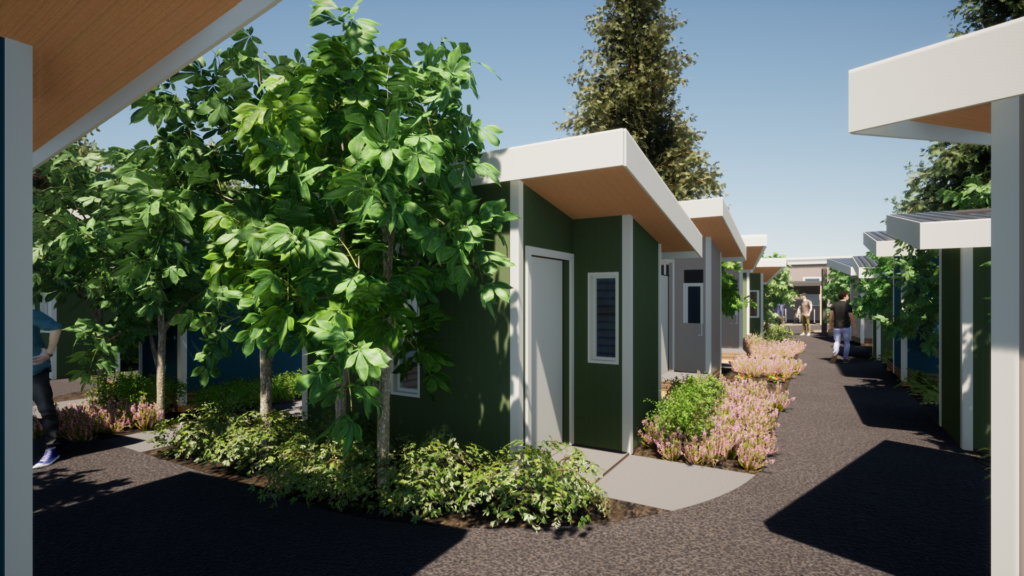
The sleeping pods were built offsite from a design by students in Portland State University’s Center for Public Interest Design, with only minimal changes due to lessons learned from the other existing villages. The site was laid out to incorporate biophilic design. We told Rachel Hill early on that much of the success of the site would depend on how much she could incorporate plants seamlessly throughout and she did just that, filling the site with vegetation that is already growing quickly. The common building was programmed using the facilities at the Veterans’ Village as a model. We were able to use modular construction at the St Johns Village, which allowed us to incorporate trauma informed design in the layout and make the building feel much larger than the Veterans’ Village buildings, even while reducing the size by more than 15%.
We ended up providing design services equivalent to around 8% of our annual income through our pro bono efforts, with many weekends and holidays spent ensuring the project was a success. Thinking about all the people who were going to get off the street with this development made it all worth it. As a matter of fact, just recently we had the pleasure of being with a houseless neighbor we’ve known for years when he found out that there was space for him at the St Johns Village and he would not be sleeping outside for the first time in over four years. He had been living outside our office off and on for the two years we were involved in getting the Village built. Getting to see such a direct impact of our efforts by rousing him from sleeping in the rain to bring him to a warm, dry home was more than we ever imagined. There are still so many who are still struggling to survive the streets and there is much more work to do, but it’s nice to remember also that every single person that gets off the street is a huge deal and something to be celebrated.




